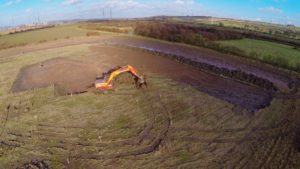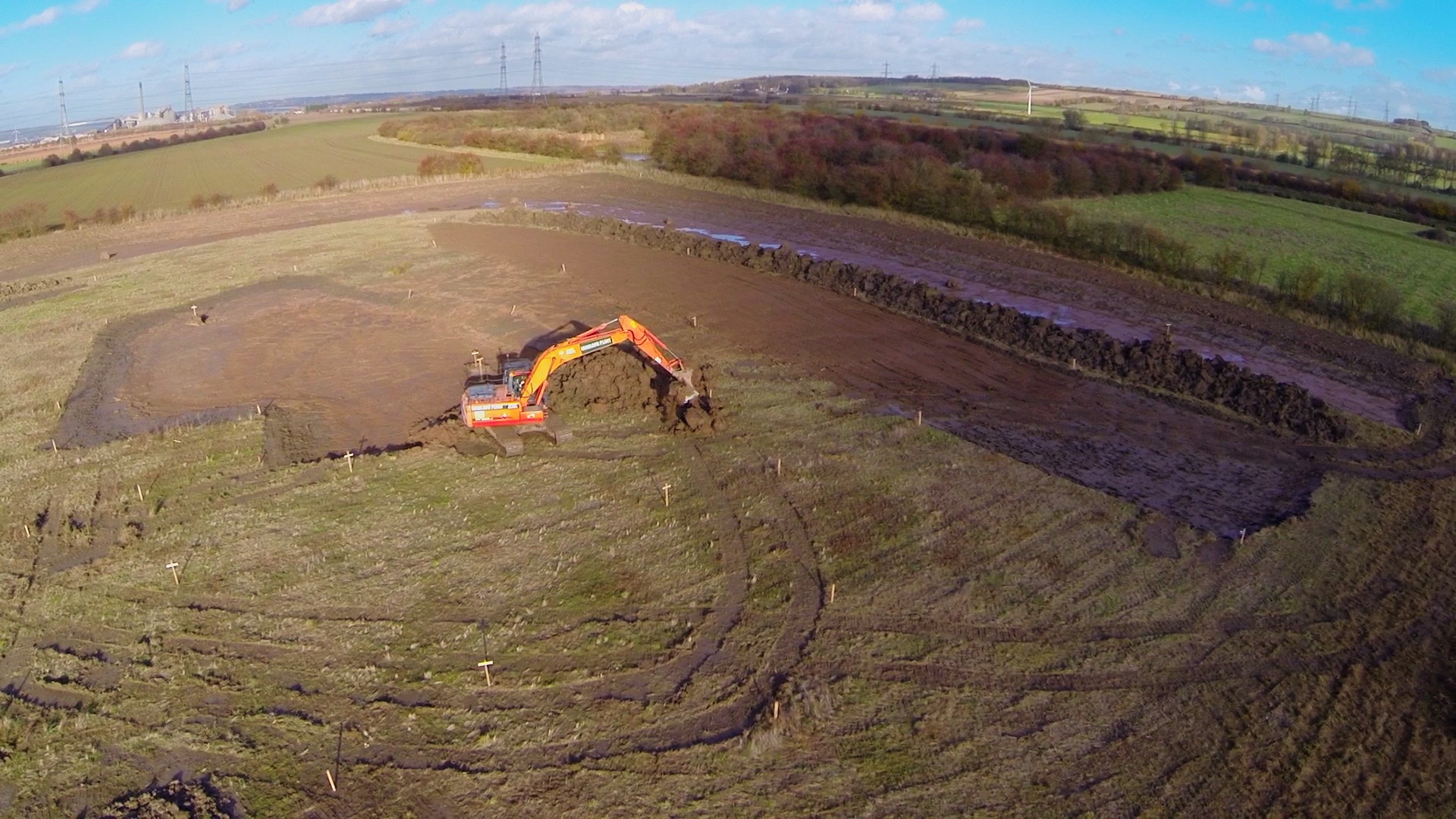 Work is now well underway to create a 16-acre thriving wetland habitat in Barton upon Humber, thanks to a £100,000 loan from The Wildlife Habitat Charitable Trust (WHCT).
Work is now well underway to create a 16-acre thriving wetland habitat in Barton upon Humber, thanks to a £100,000 loan from The Wildlife Habitat Charitable Trust (WHCT).
After months of planning and preparation, the digger rolled in on October 22nd 2018 and worked for 26 days create the landscape over 11 acres.
The 40-man club, which was formed in 1967, also has plans for a phase two in the adjacent five-acre field.
Roy Hodsdon, secretary of Barton on Humber Wildfowlers Club, said: “It’s a very exciting time for all of us. It’s by far the biggest project we have ever undertaken in the club’s history.
“It’s huge, it’s massive and it far exceeds anything I have ever done.
“It’s been very challenging for me but I have thrived on it and loved every minute and I can’t wait to see it completed.”
The estuary is a Site of Special Scientific Interest (SSSI), Special Area of Conservation (SAC), Special Protection Area (SPA), and a Ramsar Site.
The estuary is also an important industrial area and trade gateway, with an average of 40,000 ship movements per year, which puts pressure on wildlife and coastal squeeze is adding to difficulties faced by wildlife.
Conservation officer for the Humber Nature Partnership Alan Jones added: “This is a unique project because it is the wildfowlers who are doing it. It’s not multimillion pound landowners or industrial developments it’s just ordinary guys going about their hobbies and interests.”
Paul Williamson, WHCT secretary and head of land management at BASC added: “The Wildlife Habitat Charitable Trust is thrilled to be able to continue to offer support to Barton on Humber Wildfowlers.
“The WHCT has now provided two grants to cover an initial ecological survey and then also contributed £18,000 for the landscaping and fieldwork undertaken over the last couple of months.
“The club should be seen by others who shoot as an exemplar on how to create a superb conservation habitat from a blank canvas. The WHCT hope that this project will stimulate others to consider approaching the WHCT for grant funding for conservation projects.”
For further information on the WHT and WHCT and how they could help your shoot, click here.
Films on the progress of the project can be seen below:
